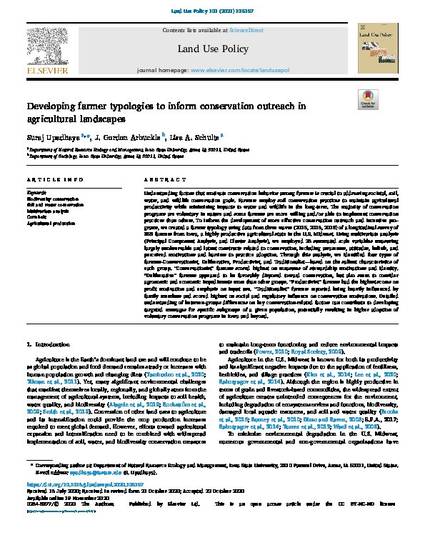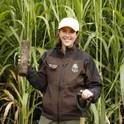
Understanding factors that motivate conservation behavior among farmers is crucial to addressing societal, soil, water, and wildlife conservation goals. Farmers employ soil conservation practices to maintain agricultural productivity while minimizing impacts to water and wildlife in the long-term. The majority of conservation programs are voluntary in nature and some farmers are more willing and/or able to implement conservation practices than others. To inform the development of more effective conservation outreach and incentive programs, we created a farmer typology using data from three waves (2015, 2016, 2018) of a longitudinal survey of 358 farmers from Iowa, a highly productive agricultural state in the U.S. Midwest. Using multivariate analysis (Principal Component Analysis, and Cluster Analysis), we employed 26 summated scale variables measuring largely unobservable and latent constructs related to conservation, including awareness, attitudes, beliefs, and perceived motivations and barriers to practice adoption. Through this analysis, we identified four types of farmers-Conservationist, Deliberative, Productivist, and Traditionalist—based on the salient characteristics of each group. “Conservationist” farmers scored highest on measures of stewardship motivations and identity. “Deliberative” farmers appeared to be favorably disposed toward conservation, but also seem to consider agronomic and economic impediments more than other groups. “Productivist” farmers had the highest scores on profit motivation and emphasis on input use. “Traditionalist” farmers reported being heavily influenced by family members and scored highest on social and regulatory influence on conservation motivations. Detailed understanding of between-groups differences on key conservation-related factors can contribute to developing targeted messages for specific subgroups of a given population, potentially resulting in higher adoption of voluntary conservation programs in Iowa and beyond.
Available at: http://works.bepress.com/lisa_schulte/73/

This article is published as Upadhaya, Suraj, J. Gordon Arbuckle, and Lisa A. Schulte. "Developing farmer typologies to inform conservation outreach in agricultural landscapes." Land Use Policy 101 (2020): 105157. doi: 10.1016/j.landusepol.2020.105157.